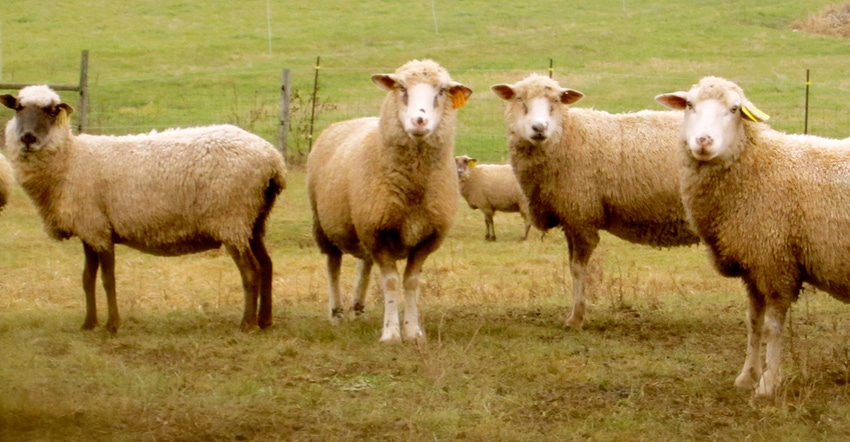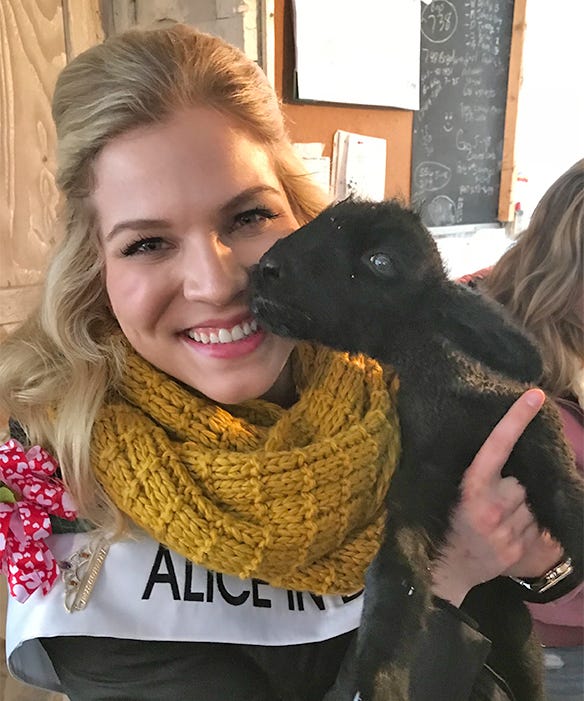February 12, 2018

By Crystal Siemers-Peterman
During these cold winter months, there are several farmers who supply us with fibers from different animals to help keep us warm. Sheep wool is one of the more popular fibers. Sheep have been a part of Wisconsin agriculture dating back to the 1800s, when the state ranked second in the nation in the number of sheep raised.
The roots of those early breeders organizations still reach across the state today. Wisconsin is still home to nearly 76,000 sheep. While some of those animals are used for other purposes such as meat, 51,000 sheep were shorn in 2017, producing more than 340,000 pounds of wool.
Shearing sheep
It depends on the breed, but typically, sheep are sheared once a year. It takes only a few minutes to shear a sheep. In Wisconsin, each sheep produces an average of 6.7 pounds of wool. Although sheep are classified into either meat or wool breeds, the wool from all breeds of sheep can be used in one way or another. Depending on the breed, the wool contains various amounts of lanolin, which is extensively used in skin products and works great as a moisturizer.

RICH HISTORY: Sheep like this one pictured with Alice in Dairyland have been a part of Wisconsin agriculture dating back to the 1800s, when the state ranked second in the nation in the number of sheep raised.

Wool is a protein fiber formed in the skin of sheep, and is thus 100% natural, not man-made. Since the Stone Age, wool has been appreciated as one of the most effective forms of all-weather protection known to man. In fact, many manufacturers try to mimic the unique properties of this fiber. Wool is a hygroscopic fiber, which means when the humidity of the surrounding air rises and falls, the fiber absorbs and releases water vapor. Heat is generated and retained during the absorption phase, making wool a natural insulator. Wool is also hydrophilic, meaning it is highly absorbent and retains liquids. Thus, the fibers dye easily and maintain the color without fading or running.
When you take a close look at wool fibers, you’ll notice they are crimped; when tightly packed together, they form millions of tiny pockets of air. This unique structure allows wool to absorb and release moisture. Wool fibers resist tearing and are able to be bent back on themselves over 20,000 times without breaking. Due to its crimped structure, wool is also naturally elastic. Thus, wool garments have the ability to stretch with the wearer but then return to their natural shape. This makes them resistant to wrinkling and sagging. Wool maintains its appearance in the longer term, adding value to the product and its lifespan.
The protective waxy coating on wool fibers makes wool products resistant to staining. They also pick up less dust, as wool is naturally anti-static. Recent innovations mean wool items are no longer handwash-only. Many wool products can now be machine-washed and tumble-dried.
Versatile fiber
Wool is very versatile because it comes in so many varieties. The differences in the texture — how fine, soft, thick or coarse —help determine how the fiber gets used. Heavier fleeces are more likely to be used for rugs, carpeting or outerwear like coats. Softer fleeces will be used more for clothing like sweaters, socks and scarves. These fibers are naturally elastic, so they stretch but won�’t break.
As you can see, Wisconsin’s sheep and wool industry is filled with variety, quality and a rich history. It is a growing industry that offers food for our tables and clothes for our closets. This is another industry that exemplifies Wisconsin’s diverse agriculture.
Siemers-Peterman is the 70th Alice in Dairyland.
You May Also Like




